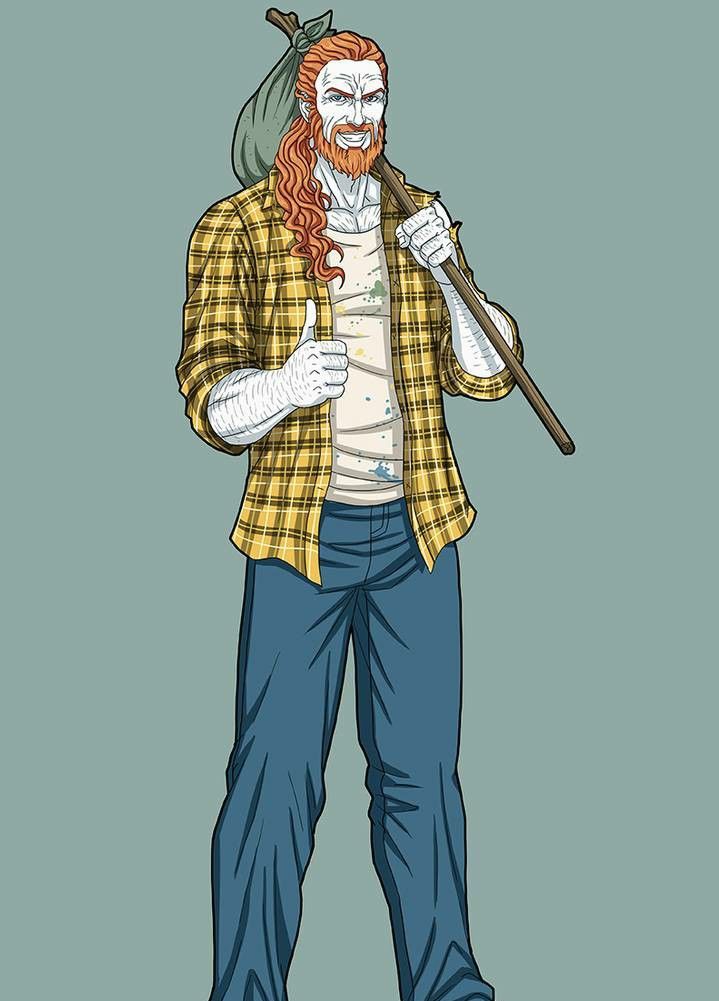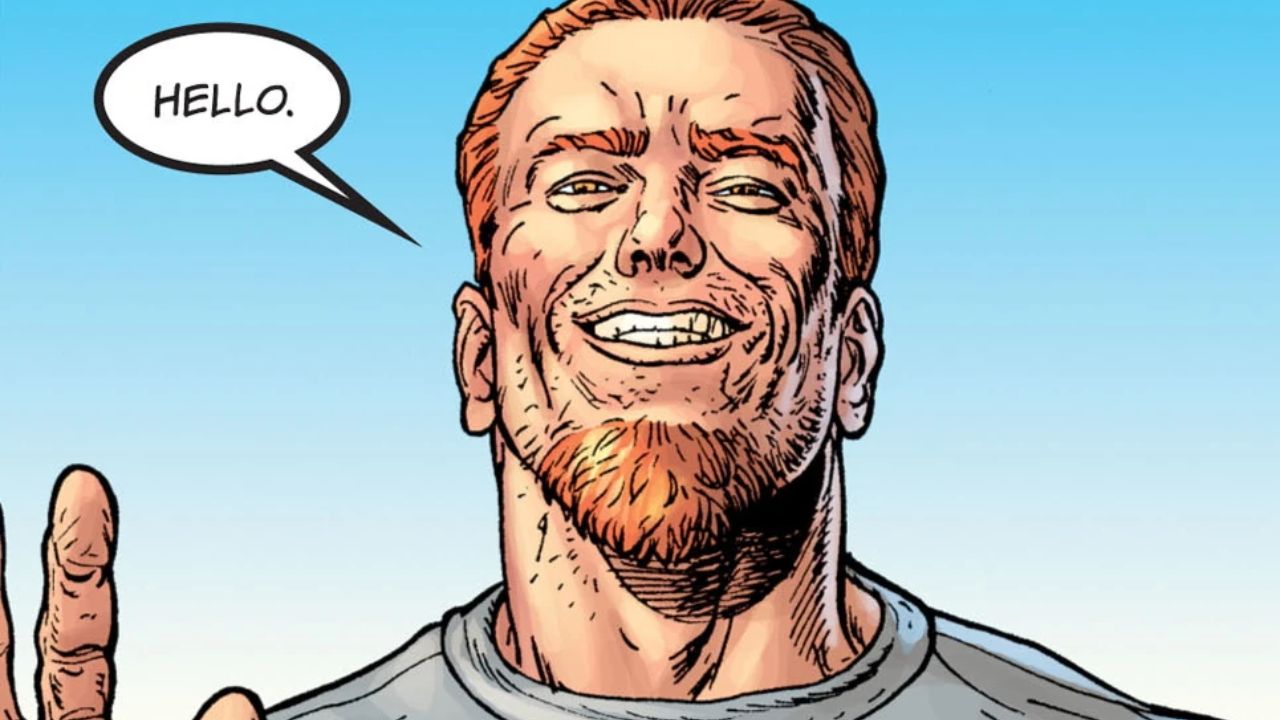Greetings and welcome to yet another interesting Marvelous Video.
We are back to investigate the narrative of one more Endless sibling.
After TV versions of Lucifer, American Gods, and Good Omens, The Sandman, a major work by Neil Gaiman, has finally been adapted for television by Netflix.
The Endless are a species of supernatural beings with control over many aspects of life and death. The series centers on Dream, one of the Endless’ seven members.
There may be seven Endless, but only four are featured in the Netflix series, leaving some viewers to wonder what happened to the other three brothers.
One of The Sandman’s most notable absences is Destruction, commonly known as the Prodigal. But who is he and why does he not appear in season 1?
Let us attempt to respond to all of these queries, but more importantly, let us investigate the causes of destruction!
The History of Destruction – Explored

Destruction of the Endless was born shortly after the universe was created, following the births of his older siblings Destiny, Death, and Dream. He is known as The Prodigal throughout the series, a reference to his leaving his kingdom.
Like his siblings, Destruction is neither a god nor a living thing. He achieves his objective of destroying in order to produce new things. He is the very definition of destruction and the best agent of transformation. Despite being Dream’s younger sibling, he is in many ways smarter and more aware of the Endless’ place in the cosmos. He serves as Despair’s older brother, resolving conflicts, offering consolation to those going through trying times, and showing Despair love and affection.
His other name is Olethros. He is depicted in older appearances wearing military attire, such as a musketeer’s uniform or plate armor. However, when he appears in more contemporary times, he is shown wearing colorful apparel without a distinct motif. When Delirium and Morpheus encounter him, he starts wearing his hair in a ponytail and has a talking dog named Barnabas. Despite the fact that he maintains his own gallery, he does not have a symbol because he disregarded his duties. The blade in his insignia is.
Around the beginning of the seventeenth century, Destruction abandoned his domain and duties. This was due to the beginning of the human Age of Reason, which would ultimately result in the development of the atomic bomb. Destruction fled the family because he didn’t want to be held accountable for the havoc this would wreak.
He continued to exist as the active component of Destruction; he only stopped exercising control over the affairs under his supervision. Even though it isn’t explicitly stated, it has been hypothesized that this is the manifestation of Devastation’s domain, since, as he claims, destruction didn’t cease; it was just no longer his responsibility. This is demonstrated for Fenrir, who is characterized as the act of destruction itself.
In Brief Lives, when his siblings Morpheus and Delirium set out to find him, Destruction takes center stage. When they do finally meet, their conversations are at odds with one another; Destruction’s choice of path perplexes and even angers Morpheus to some extent, while Destruction struggles to understand Morpheus’ perspective and focuses on trying to impart to him some wisdom on the importance of change and self-knowledge.
Delirium is dependent on her siblings, especially her older brothers, for support; all she wants is her brother back. Destruction ultimately just walks away, stowing his sword and scrying pool into a bundle before ascending into the air and dissipating.
Destruction is self-obsessed in the best way; after renouncing his obligations, he focuses only on trying to understand and control his own nature. This is shown in his conscious effort to defy his own fundamental nature and create instead of destroying; he is depicted at various points writing indifferent poetry, painting indifferent pictures, cooking indifferent meals that the intended recipients do not consume, and making Greek coffee that Delirium is unable to enjoy properly.
Several characters criticise him as being a terrible artist. Death’s assertion that everyone can know everything is perhaps what inspired Destruction. He explains to Dream that each Endless is a ruler of opposites, ruling over things such as life and death, dreams and reality, destruction and creation, destiny and freedom, hopelessness and fulfilment, desire and insanity, and many more.
Destruction also hints at the future demise and replacement of his brother Dream in this exchange as another transformation component. In truth, the events that led to the end of Dream were started by Destruction when he revealed to Orpheus that Death had a means for him to get to the Underworld.
OOH, Did I speak too much? Apologies, please.
Let’s talk about Destruction’s nature of character a bit now.
Destruction wants to regard himself as the embodiment of change; a warrior poet, he enjoys experimenting with many artistic mediums, none of which turn out particularly well, and the things he gets engaged with never seem to go as planned. Destruction is the most amiable and approachable Endless, except Death. He was the family’s pacifier and the one who got along with everyone before he departed. Some other Endless appear to view him with disdain for varying degrees of neglecting his responsibilities. Destruction himself, though, has no ill will against them and regrets leaving his family, but he did it because he thought it was morally right.
Ironically, Destruction is not in total control of his own territory. Destructive activity continued; as he claims, it was just no longer his responsibility. His argument is illustrated by the character Fenrir from the spinoff series Lucifer, who is said to represent the act of destruction itself, as mentioned before. It has been hypothesised that this is the embodiment of Destruction’s domain, even if it hasn’t been said.
Destruction is revealed to be quite different in a narrative in Endless Nights that takes place billions of years before the events of the Sandman Series. Just like Delirium was previously Delight, Destruction is shown to be jittery and stuttering, contrasting to the jocular and articulate Destruction in the main series.
Destruction first makes his appearance in Issue 44 (Vol 2).
Set after, he left his realm in the 17th century. We see Dream and Delirium looking for their brother after 300 years.
Dream and Delirium make their way to the house of Bernie Capax, a former acquaintance of their lost brother Destruction. They discover, however, that he was murdered only the day before by a collapsing building. Danny, his son, was so horrified by what he saw in his father’s locked office that he began drinking and is now pretty inebriated. He brings the duo down to the office to show them that his father had a life comparable to that of a spy or burglar. He has no idea his father has been alive for about 1500 years.
In this issue, we don’t see Destruction in the present; instead, we see him in retrospection.
In the Dreaming, Dream communicates with Lucien. Despite his lack of desire to find his brother, Dream knows that there is a power aiming to keep them from finding him. He requests that Lucien checks into it for him. Lucien said he hopes they locate Destruction since he was a well-liked and respected man.
Dream recalls speaking with his brother long ago. He was going around the streets with the Corinthian when he was approached by Destruction. Dream grabbed a thief by the arm and demanded that his Dreamstone be returned to him. Dream informed the pickpocket that he would have nightmares about the occurrence until he was hung and that visions of his own death would colour his destiny until he was hanged. Finally, the guy relinquished the stone.
Destruction stated that the threats were unnecessary in order to reclaim the stone and that times are changing. To explain this, he brought Dream to a college where professors increasingly relied on logic and science. A scientist was doing vivisection on an orangutan at this specific college. Destruction indicated that there would be a revolution in man’s mentality that would place reason first and that the chaos of destruction would be unnecessary. In this way, he foretold his own resignation from his position.
Destruction makes his next appearance in Issue # 46.
We see Destruction in the present day, trying his hand at poetry in his hiding location, 300 years after giving up his realm. His attempts are not particularly successful. He is not alone. His dog friend Barnabas is beside him as an honest critic of his work. Destruction explains that he has never met his family, which is why he is so concerned in response to Barnabas’ confusion. In order to avoid giving himself away to his younger brother, Destruction says he no longer dreams.
Dream chooses to end the search for Destruction after having travelled across the nation and seeing the passing of yet another individual on Delirium’s list of Destruction’s acquaintances. As a result, his sister is quite angry with him, but he steadfastly leaves her alone and returns to the Dreaming.
When Dream comes back, he confines himself in his royal room and shuts most of the Dreaming’s entrances. Then he expands the Dreaming to include a new area. He tells Pharamond that his time on Earth is up and apologises for putting his employee Ruby at risk. Ruby died after being burnt to death due to the search for Destruction.
He encounters Bast, the Egyptian cat deity, there. He hopes she can fulfil her commitment from two years ago to inform him where his brother is, since he suddenly realises that finding him could be more critical than desirable. Sadly, Bast has no real idea of where Destruction is. She only knows that he was spotted in Paris sixty years ago.
After his younger sister criticises him for how he treated her, Dream apologises and says that he only agreed to help her search, because he had secretly hoped to run into the lady who had just left him. He decided to stop the search when the situation became risky. He now realises they must go on with their hunt, nevertheless. Dream consents to continue the quest with Delirium as her partner after the latter forces him to acknowledge his feelings for her.
The next issue begins with Destruction, who decides to pursue the skill of cooking in his hideout and explains to his canine friend Barnabas that even cooking is a kind of creation. Barnabas observes that the sculpture outside is little more than a block of marble with holes and expresses little excitement or optimism for Destruction’s capacity to prepare food.
Meanwhile, Dream and Delirium have made the decision to continue looking for their older sibling, even though their list of leads is now basically useless. Dream determines that their best course of action is to see their brother Destiny in his garden, but first, they must locate a maze and navigate their way through it. Delirium takes them to a theme park on Earth, where a makeshift maze exists. Once inside, they discover that Destiny’s realm is fundamentally tied to every maze in the cosmos.
Naturally, Destiny has been anticipating them, and he is aware of their purpose for arriving. He suggests they stop looking for Destruction, but he already knows they won’t. Destiny hints cryptically that Dream will suffer consequences if he pursues Destruction, but he is unable or unwilling to elucidate.
Finally, Dream can only learn from Destiny that they require an oracle who can predict the Endless. They only know of one such prophet, Dream’s own son Orpheus, whom he has already vowed never to see again.
Dream and Delirium arrive on the Greek island where Andros Rhodocanakis and his family are manning Orpheus’ shrine. After some hesitation, Dream unwillingly converses with his son while Delirium amuses herself by Johanna Constantine’s gravestone. After some time, Dream returns with the information they were looking for, while acknowledging that it wasn’t free.
The two are transported by Andros’ son Kris in a rowboat to a nearby island, where Destruction has, it turns out, been residing for some years. Destruction finally welcomes his siblings into his house for meals and conversation.
Dream and Delirium aren’t interested in the mortal cuisine their brother Destruction has prepared for them for supper. Delirium describes the lengths she and Dream took to find Destruction, and Dream tells him how the rest of the family is; similar. Finally, Destruction inquires what they intend to do now that they have located him.
Delirium believes he will return with them and resume his position. Dream reveals that he came out of honour after witnessing the death of a mortal called Ruby due to their hunt. According to Destruction, Dream’s thoughts towards Ruby indicate that he has evolved drastically over 300 years. Eventually, he concedes that Ruby’s fate was most likely the consequence of the safety precautions he put in place when he departed.
Destruction justifies his decision to leave by saying that the Endless are not the servants of the lands they rule. Destruction happens with or without him, and in the 300 years after he went, it has undoubtedly happened without his influence. They are all only one-half of a two-sided coin, too. There cannot be creation without destruction. There can be no hope if there is no despair. Perhaps there cannot be a reality without a dream. Destruction laments the idea that he will have to go once more in order to get away from his family.
Before leaving, he ties up his sigil, a sword, in his handkerchief. To make up for the fact that he won’t return with them, he leaves his dog Barnabas to Delirium. He says goodbye to each of them before heading into the stars.
What Makes Destruction So Powerful?

Destruction is one of the seven Endless, who are inconceivably strong and almost immortal beings.
Destruction is both the Lord of Destruction and the Personification of all Destruction and Creation. He has control over both the act and process of destroying and the act of creating, inventing, or manufacturing.
Destruction is ubiquitous on Earth at all times, although generally not in a form apparent to people.
Destruction may alter his appearance and dress, as well as move immediately anyplace in the mortal realm where humans die and live. He can quickly enter and transit most enchanted realms as well, as long as he pays due respect.
He has the ability to produce a blast that can destroy everything, as well as gain strength from devastation; his powers are infinite.
Destruction has god-like endurance and invulnerability. He can also control and absorb energy at will. He cannot be killed, wounded, or injured with conventional means of destruction or armament.
Destruction possesses unfathomable physical might. He possesses infinite insight and understanding. With only one finger, he can smash a massive asteroid and raise the largest mountain.
He is a formidable hand-to-hand warrior with an excellent grasp of combat styles and fighting tactics from all over the universe.
Aside from that, he has the ability to alter and transform reality and matter at a whim.
Trivia

Destruction’s speech bubbles have an extra-thick border in the comics. Aside from that, they resemble the human characters’ speech bubbles, emphasizing the notion that he, together with Death, is the most human of the Endless.
Marvelous Verdict

Destruction is undoubtedly one of the most essential and exciting characters amongst the seven endless members. His story arc in Brief Lives is one of the most exciting parts of the Sandman comic book series.
Destruction will most likely not emerge until season 3 if The Sandman adapts two volumes of the graphic novels every season. But he is clearly missed by his siblings, particularly Desire and Delirium, who initiate the search for Destruction in Brief Lives. Desire also holds Dream responsible for Destruction’s departure. Finally, meeting Destruction is something to look forward to, if The Sandman is a big enough hit for Netflix to further commission seasons to finish the narrative.
If you liked the video, you know what to do. Let us know in the comments whose backstory you want us to review the next time! See you till then.
